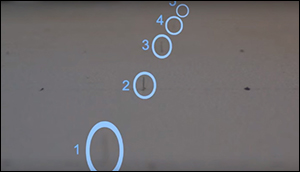3-D Microwave Camera Can See Through Walls
19. 10. 2015 | MIT Media Lab | media.mit.edu
Modern cameras cannot see through fog, in the dark, or through walls, which make tasks such as driverless vehicles and search-and-rescue difficult.
Where visible-light fails, radio-waves can easily penetrate these obstructions, however radar-imaging devices are complex, low-resolution, and unable to image certain geometries and angled surfaces. This paper takes a camera-like approach to microwave-imaging, resulting in a simpler camera architecture which can capture fuller 3D images through-walls.

The aim of the work of team of MIT researchers is not just to detect objects, but also to form images in 3D. There are many advantages to being able to see how many limbs a person has and how tall they are; not just in what general area they are located. In order to image at such large wavelengths, sensors must cover a very large aperture at a high enough density to sufficiently sample the reflected waves (and prevent aliasing). Classical radar setups utilize hundreds of thousands of sensors to cover a large aperture at an appropriate density.
The future of commercial systems cannot rely on such large setups because they are difficult to produce and handle. Instead of spreading the electronics across the entire aperture, scientists focused all of the electronics to a 10” x 10” space, and use a large passive reflector to focus the reflected energy to this small area. This setup enables higher resolution radar imaging by covering a large aperture with a passive-element, and constraining all of the electronics to a small focal plane. This architecture is useful for situations where many electronics are focused to a small area (such as a chip), since all that is necessary to increase the resolution of the device is to introduce a passive lens.
The wavelength of light MIT researchers imaging with is on the same order of size as the objects and features they are trying to image. At these large wavelengths, surfaces which normally appear diffuse appear mirror-like when viewed by microwaves. This causes normal objects to reflect light in ways that don’t return to the camera. In order to overcome this, this camera utilizes multiple flashes to capture surfaces which would normally appear stealth.
Read more at: MIT Media Lab
Image Credit: MIT Media Lab
-jk-




